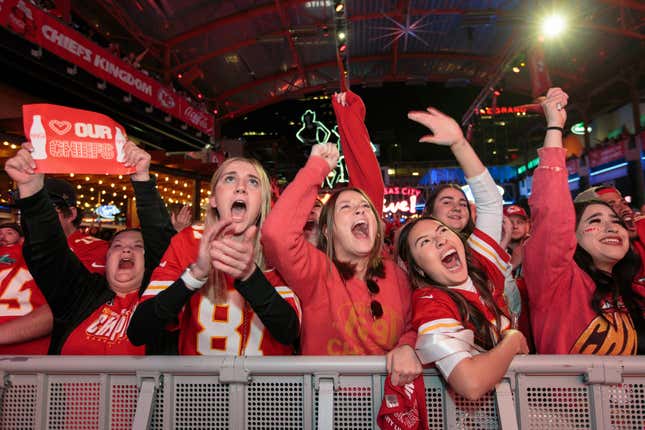
Inflation hasn’t stopped consumers from treating themselves to Toblerone chocolates and San Pellegrino water.
Mondelez, maker of snacks including Oreo cookies and Cadbury chocolates, reported yesterday that revenue is up over 7% for the first three months ending in March, versus the year before. Last week, Nestle, the biggest food manufacturer in the world, reported that sales grew around 5% in the first three months of this year, compared to the year before. Similarly, Starbucks recently posted higher sales.
Why is that? Consumers turn to treats and snacks during times of economic downturns as a way to indulge when the world feels chaotic and money is tight. Kool-Aid established itself as a brand during the Great Depression because it was an affordable, everyday luxury.
During the pandemic, US shoppers have spent more on sweets—for instance, triple chocolate cookies saw more than 5,000% growth in sales from 2019 to 2021—according to data from Square, a financial services firm. Higher food prices, which were 8.8% (pdf) more expensive in March versus a year ago, haven’t deterred consumers yet.
“In times when money gets really tight…having little indulgences, having little treats that are “necessary” or practical are also important because they make us feel like even if things are bad…we can have a little celebratory something,” said Amy Bentley, a food historian at New York University.
Bentley says that finance gurus who advise boosting savings by cutting back on your daily Starbucks drink, you can increase your savings, miss the point that a latte is a small way to treat yourself.
With the workday still operating as usual during the pandemic—remote or not—these items are stimulants that fuel us through the day, whether as a pick-me-up or to have a calming effect, she adds.
Plus, being stuck more at home, consumers have turned to spending more at the grocery store since they weren’t venturing out to restaurants as much, said David Ortega, an associate professor at Michigan State University who focuses on food marketing and agribusiness management.
Americans spend less of their budget on food than in the past
Mondelez, Nestle, and Starbucks have indicated that more price increases are on the way. But, unlike rent or transportation, Americans spend a lot less of their budgets on food than in the past. Rather than cutting back on food, high prices are pushing consumers to make changes to discretionary spending such as eating out and travel, said Dirk Van de Put, CEO of Mondelez, on a conference call with investors and analysts Tuesday.
Food also remains a non-negotiable necessity and food companies often pass price increases to consumers, primarily, because they have significant market power, said Ortega.
Snacking is now more part of the meal
More broadly, snacking is perhaps becoming a bigger part of the modern diet. “[T]he discretionary part of snacking is, I would argue, that it’s not so discretionary anymore with the modern consumers,” said Van de Put. He said that in China, there has been a big increase in snack biscuits because they have become a dietary staple.
That said, price increases will be felt more by households with tighter budgets. How much higher can prices go before consumers start to cut back on chocolate bars and sparkling water is an open question, particularly as eating out becomes the norm again.
As prices rise, consumers are treating themselves with snacks - Quartz
Read More

No comments:
Post a Comment